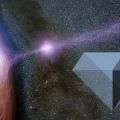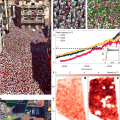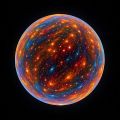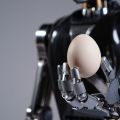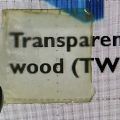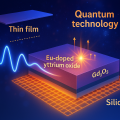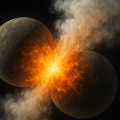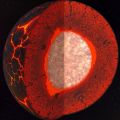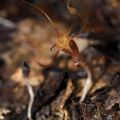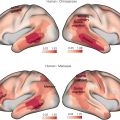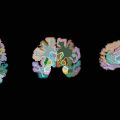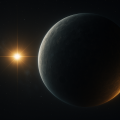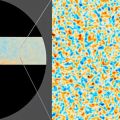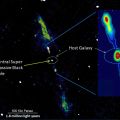Metazoa (classification phylogénétique) - Définition
Source: Wikipédia sous licence CC-BY-SA 3.0.
La liste des auteurs de cet article est disponible ici.
La liste des auteurs de cet article est disponible ici.
En savoir plus
Sources bibliographiques de référence
sur les Metazoa en général
- Kevin J. Peterson, James A. Cotton, James G. Gehling et Davide Pisani : « The Ediacaran emergence of bilaterians: congruence between the genetic and the geological fossil records », Phil. Trans. R. Soc. B, vol. 363, 2008, pp. 1435–1443
- Casey W. Dunn, Andreas Hejnol, David Q. Matus, Kevin Pang, William E. Browne, Stephen A. Smith, Elaine Seaver, Greg W. Rouse, Matthias Obst, Gregory D. Edgecombe, Martin V. Sørensen, Steven H. D. Haddock, Andreas Schmidt-Rhaesa, Akiko Okusu, Reinhardt Møbjerg Kristensen, Ward C. Wheeler, Mark Q. Martindale et Gonzalo Giribet (2008) « Broad phylogenomic sampling improves resolution of the animal tree of life », Nature, 452, pp. 745-749 : présentation ici
- Gonzalo Giribet, Casey W. Dunn, Gregory D. Edgecombe et Greg W. Rouse, « A modern look at the Animal Tree of Life », in Z.-Q. Zhang et W.A. Shear (éd.) (2007) « Linnaeus Tercentenary: Progress in Invertebrate Taxonomy », Zootaxa, 1668, pp. 61-79
- Sina M. Adl et al. (2005) « The New Higher Level Classification of Eukaryotes », J. Eukaryot. Microbiol., 52 (5), p. 399–4513
- James W. Valentine (2004) On the Origin of Phyla, University of Chicago Press, 614 pages, ISBN 978-0226845487
- Kenneth M. Halanych (2004) « The New View of Animal Phylogeny », Annu. Rev. Ecol. Evol. Syst. 35, pp. 229–256
- Jan Zrzavý (2001) « The interrelationships of metazoan parasites: a review of phylum- and higher-level hypotheses from recent morphological and molecular phylogenetic analyses », Folia parasitologica, 48, pp. 81-103
- Kevin J. Peterson et Douglas J. Eernisse (2001) « Animal phylogeny and the ancestry of bilaterians: inferences from morphology and 18S rDNA gene sequences », Evolution and Development 3 (3), pp. 170-205
- Thomas Cavalier-Smith (1998) « A revised six-kingdom system of life », Biological reviews 73, p. 203-266
sur des taxa particuliers développés sur cette page
- Donald J. Colgan, Patricia A. Hutchings et Emma Beacham : « Multi-Gene Analyses of the Phylogenetic Relationships among the Mollusca, Annelida, and Arthropoda », Zoological Studies, vol. 47, n°3, 2008, pp. 338-351
- Andreas Wallberg, Marco Curini-Galletti, Afsaneh Ahmadzadeh et Ulf Jondelius : « Dismissal of Acoelomorpha: Acoela and Nemertodermatida are separate early bilaterian clades », Zoologica Scripta, vol. 36, n°5, 2007, pp. 509-523
- Bernhard Hausdorf, Martin Helmkampf, Achim Meyer, Alexander Witek, Holger Herlyn, Iris Bruchhaus, Thomas Hankeln, Torsten H. Struck et Bernhard Lieb : « Spiralian Phylogenomics Supports the Resurrection of Bryozoa Comprising Ectoprocta and Entoprocta », Mol. Biol. Evol., vol. 24, n°12, 2007, pp. 2723–2729
- Simon Conway Morris et Jean-Bernard Caron : « Halwaxiids and the Early Evolution of the Lophotrochozoans », Science, vol. 315, n°5816, 2007, pp. 1255-1258
- Sarah J. Bourlat, Thorhildur Juliusdottir, Christopher J. Lowe, Robert Freeman, Jochanan Aronowicz, Mark Kirschner, Eric S. Lander, Michael Thorndyke, Hiroaki Nakano, Andrea B. Kohn, Andreas Heyland, Leonid L. Moroz, Richard R. Copley et Maximilian J. Telford : « Deuterostome phylogeny reveals monophyletic chordates and the new phylum Xenoturbellida », Nature, vol. 444, 2006, pp. 85-88
- Guy M. Narbonne : « The Ediacara Biota: Neoproterozoic Origin of Animals and Their Ecosystems », Annu. Rev. Earth Planet. Sci., vol. 33, 2005, pp. 421–442
- Mikhail A. Fedonkin : « The origin of the Metazoa in the light of the Proterozoic fossil record », Paleontological Research, vol. 7, n°1, 2003, pp. 9-41
- Jerzy Dzik : « Anatomical Information Content in the Ediacaran Fossils and Their Possible Zoological Affinities », Integr. Comp. Biol., vol. 43, 2003, pp. 114-126
Autres sources bibliographiques
- Bernard L. Cohen et Agata Weydmann (2005) « Molecular evidence that phoronids are a subtaxon of brachiopods (Brachiopoda: Phoronata) and that genetic divergence of metazoan phyla began long before the Early Cambrian », Org. Divers. Evol. 5 (4), pp. 253-273
- J. E. Blair, S. B. Hedges, 2005. « Molecular Phylogeny and Divergence Times of Deuterostome Animals », Mol. Biol. Evol. 22, 2275-2284.
- K. G. Helfenbein, J. L. Boore, 2004. « The Mitochondrial Genome of Phoronis architecta - Comparisons Demonstrate that Phoronids Are Lophotrochozoan Protostomes », Mol. Biol. Evol. 21, 153-157.
- R. A. Jenner, 2003. « Unleashing the Force of Cladistics ? Metazoan Phylogenetics and Hypothesis Testing », Integr. Comp. Biol. 43, 207-218.
- J. L. Boore, J. L. Staton, 2002. « The Mitochondrial Genome of the Sipunculid Phascolopsis gouldii Supports Its Association with Annelida Rather than Mollusca », Mol. Biol. Evol. 19, 127-137.
- J. W. Valentine, 1997. « Cleavage patterns and the topology of the metazoan tree of life », PNAS 94, 8001-8005.
- K. Halanych, J. Bacheller, A. Aguinaldo, S. Liva, D. Hillis, J. Lake, 1995. « Evidence from 18S ribosomal DNA that the lophophorates are protostome animals », Science 267, 1641-1643.
- J. Ballard, G. Olsen, D. Faith, W. Odgers, D. Rowell, and P. Atkinson, 1992. Evidence from 12S ribosomal RNA sequences that onychophorans are modified arthropods. Science 258, 1345-1348
Sources internet
Vendobionta
- The Origin and Early Evolution of Animals
- The Ediacaran Assemblage
Liens internes
- Arbre phylogénétique
- Eukaryota (classification phylogénétique)
- Opisthokonta (classification phylogénétique)
- Metazoa
- Photo-guide taxinomique du monde animal
- Orientation bibliographique en zoologie (taxinomie)
